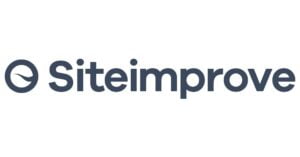Where digital accessibility was once a foreign concept, today it’s an integral part of website development and the user experience.
Far too many businesses, big and small, are still not taking steps to create a more inclusive online experience for their customers, even though their websites are often the first interaction people will have with their brands.
The online experience a customer has with your brand will alter their perception of your business and pave the way for whether or not they choose to support you.
Research from the CDC shows that 1 in 4 adults in the United States is living with some form of disability. Imagine how much business you are losing by not catering to the needs of at least a quarter of the people who visit your site.
Not to mention how this could be altering your brand’s image in the public eye.
Everyone deserves to be able to access and engage with online platforms and content as equally as possible. And with the broad access to accessibility tools and resources, there’s really no reason or excuse not to create the best possible experience for all users.
Digital accessibility is naturally an ethical journey. Businesses that care about their employees, customers, and society as a whole should strive to do their part to create a more inclusive online arena.
However, even the powers that be are making online accessibility a more important issue. The vast majority of global disability acts such as the ADA, AODA, and EAA, all incorporate the Web Content Accessibility Guidelines (WCAG).
Government institutions have acknowledged the importance of the web and the integral role it plays in all of our lives, so it only makes sense to extend accessibility requirements into this space.
Failing to comply with these standards not only leaves your business vulnerable to publicity issues, but costly lawsuits too. Even the smallest of businesses are now being targeted.
When a website is not designed with accessibility in mind, it creates significant barriers for users with disabilities. It limits their ability to access information, complete tasks, or engage with online services.
People with visual impairments may struggle with websites that lack proper screen reader compatibility, while those with motor disabilities can find it impossible to navigate sites that rely solely on precise mouse movements.
Users who are deaf or hard of hearing may also miss out on essential video content if captions are not provided.
It’s these nuances that business and website owners often overlook if they’re used to being able to interact with a website without assistance.
When updating a site or developing one from scratch, you want to focus on the four core principles of website accessibility.
While there are a number of on-site elements to consider when making a website more accessible, if you are just getting started, here are some basics you can implement first:
Alternative text (alt text) provides a textual description of images. It’s this text that allows screen readers to convey the meaning and context of images to visually impaired users. Alt text is also useful for when images fail to load.
If audio and video are prominent forms of content on your site, it’s essential to add captions and transcripts. Without them, site visitors who are deaf or hard of hearing will be unable to engage with and enjoy your content. They may even miss out on important information.
Using proper HTML elements (e.g., <header>, <nav>, <article>, <button>) improves the structure of your website structure. It makes it easier for assistive technologies to interpret and navigate content. However, in instances where semantic HTML is not enough, there is ARIA.
ARIA can be used to ensure that more advanced elements such as drop-down menus and sliders are recognized by assistive devices.
Ensuring all interactive elements (links, buttons, forms) can be accessed and used with a keyboard allows people with motor disabilities or those who cannot use a mouse to navigate your site effectively.
A sufficient contrast between text and background enhances readability for users with visual impairments, including those with color blindness. WCAG recommends a contrast ratio of at least 4.5:1 for normal text.
A mobile-friendly, flexible layout will adapt your website to different screen sizes and assistive technologies.
Taking the time to update your website or build a more accessible site from scratch is always going to be a worthwhile endeavor.
Here are just a few of the top tools you can use to simplify your digital accessibility process.
 |  | |||
| Existing Customers |     |     |    |     |
| Technology | Full-service web accessibility solution | Fully automated web accessibility solution | Manual accessibility solutions | Manual web accessibility solution and automated browser extension and plugin |
| Compliant in Countries | ||||
| Compliance | WCAG, ADA, Section 508, AODA | WCAG, ADA, Section 508, AODA | WCAG, ADA, Section 508, AODA | WCAG, ADA, Section 508, EAA |
| Prices | Starts at From $59 | Starts at From $49 | Starts at Custom Pricing | Starts at Custom Quotation Required |
| Partner Program (for Web Agencies) |
|
|
|
|
| Customer support | Chat & Email Support | Chat & Email Support | Phone and Email Support | Email & Phone Support |
| Free Demo |
Yes Free demo available |
Yes Free demo available |
Yes Free demo available |
Yes Free demo available |
| Free Trial |
7-day free trial No credit card needed |
7-day free trial Credit card required |
No |
No Free website accessibility audit available |
Get started by trying AccessibilityChecker for free to assess where your website currently stands in terms of compliance.
Scan your website for accessibility related issues for free